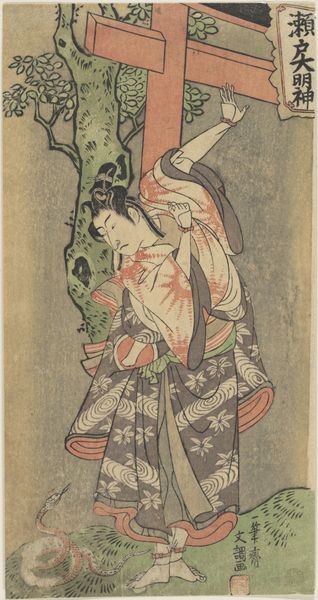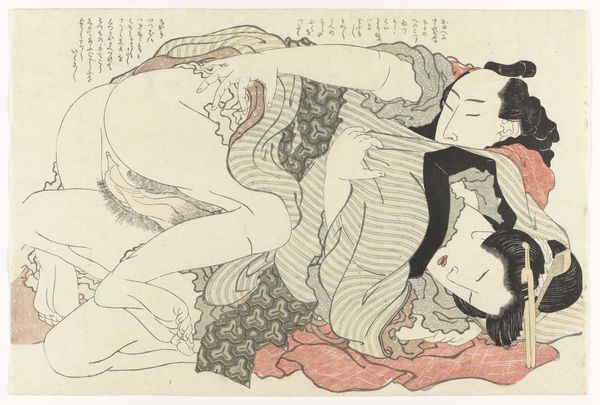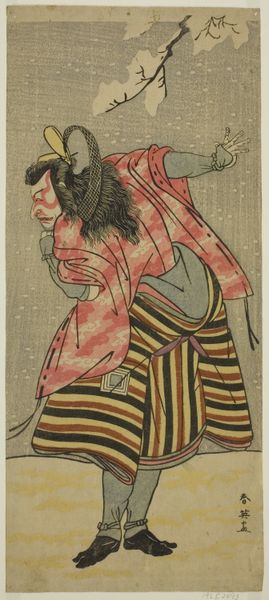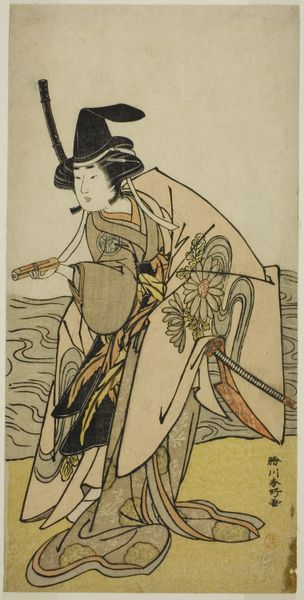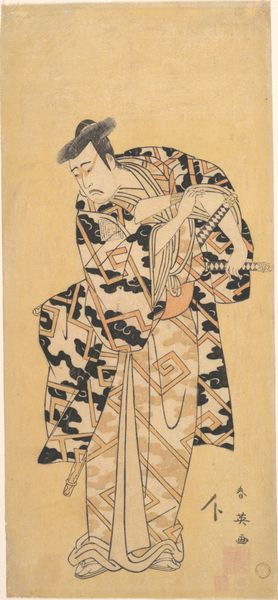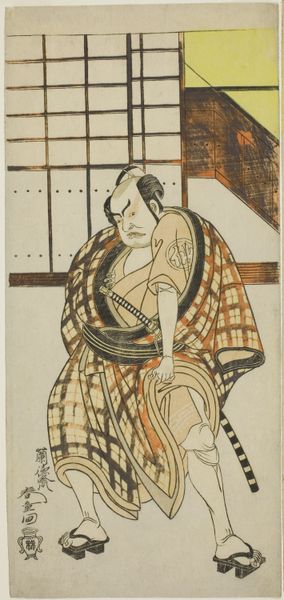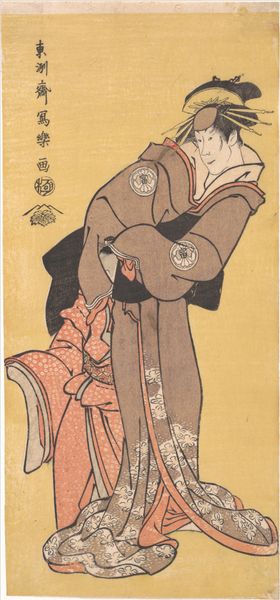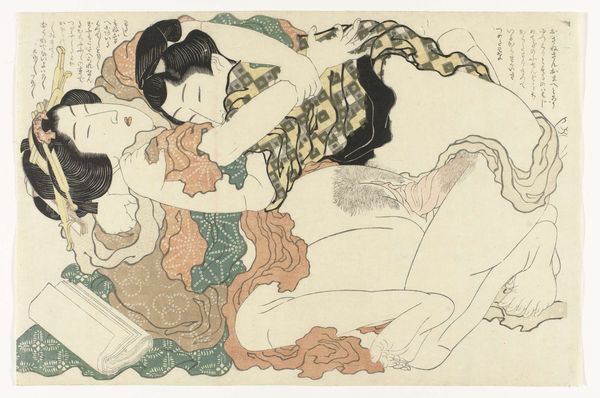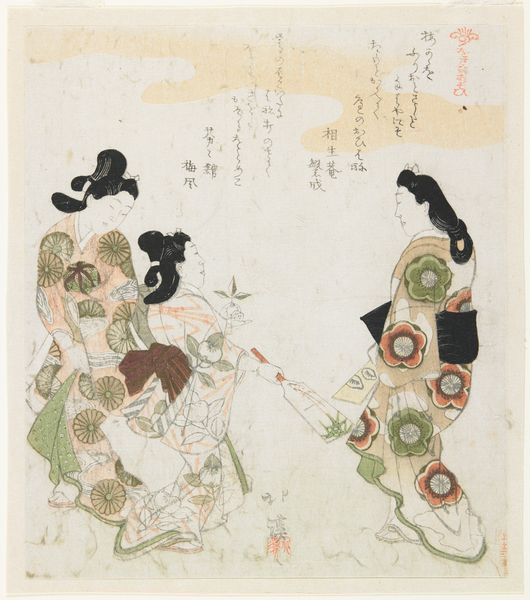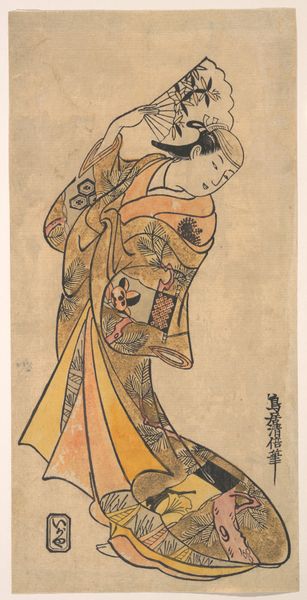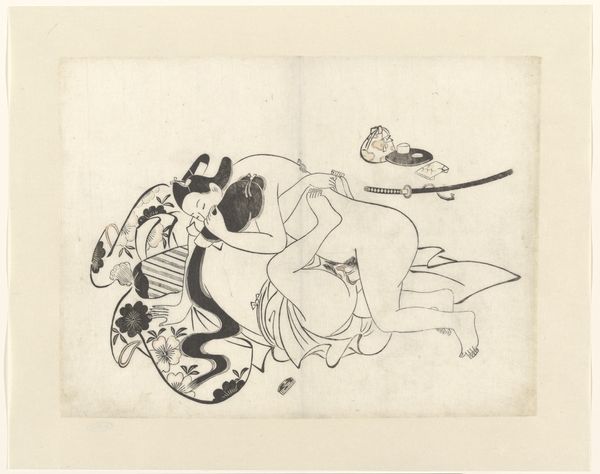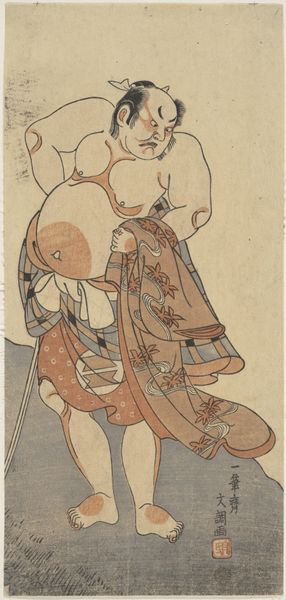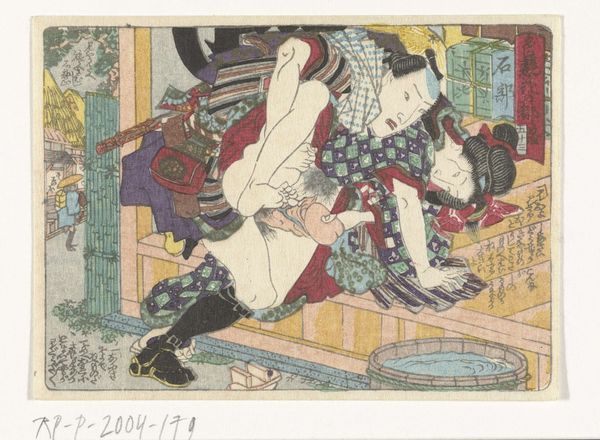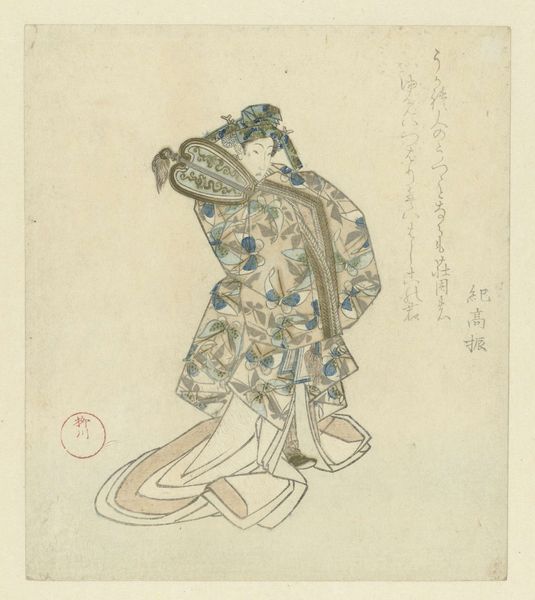
Woman of Ōhara with Firewood Bundle and Kite c. 19th century
0:00
0:00
print, ink, woodblock-print
#
portrait
# print
#
asian-art
#
ukiyo-e
#
japan
#
figuration
#
personal sketchbook
#
ink
#
woodblock-print
#
genre-painting
Dimensions: 7 5/8 x 4 3/16 in. (19.3 x 10.7 cm) (image, sheet)
Copyright: Public Domain
Curator: Look at the patterns! So subtle, so intricately made with wood and ink. It has such a quiet but insistent impact, don't you think? Editor: It does draw you in, even before considering its context. This print, entitled "Woman of Ōhara with Firewood Bundle and Kite" by Katsushika Hokusai, probably dates to the 19th century, and is rendered using ink and woodblock printing. It's currently held at the Minneapolis Institute of Art. Curator: The work immediately brings the question of labor to mind. I’m curious about the labor that went into it, both the woman’s depicted labor and Hokusai's painstaking work, especially concerning printmaking technology and material accessibility at that time. Editor: Absolutely. Hokusai often represented the everyday lives of common people. This particular print encapsulates gender, labor, and commerce within its composition. We have the female subject, head wrapped to protect her from carrying firewood, perhaps for the market in Kyoto. Curator: Did the depicted profession influence the reception of this work? This is what I'd like to research. Who was buying this? What were they thinking? What would they use this kind of print *for*? Editor: The print falls squarely into the *ukiyo-e* tradition, literally 'pictures of the floating world,' produced and consumed by a rising urban class, and demonstrates the popular themes that appealed to the era's tastes. Curator: It makes me think of labor's place in a highly classed system... and, frankly, this artwork also highlights the way "folk" craft and visual media were consumed at the time! The firewood, the patterned fabrics, the kite – it's all material culture. Editor: Right, the kite introduces the social sphere, as kite-flying was both an entertainment and a tradition, especially common among children during festivals. This artwork offers the complexities of daily life, particularly for women engaging in work and culture. It challenges the common depiction of feminine passivity and illuminates the importance of female figures as vital contributors to social and economic processes in 19th-century Japan. Curator: I keep getting drawn back to the actual, physical making of the print though, to the wood, to the carving of lines… the production methods... Editor: Well, by considering it within the social fabric and lived experiences of 19th century Japan, perhaps you see even deeper into what such craft could come to mean. Curator: Definitely. I am thinking about who controls these means of artistic production... Editor: Seeing it both as art and artifact deepens my perspective as well, particularly given what it can illuminate regarding historical representation.
Comments
No comments
Be the first to comment and join the conversation on the ultimate creative platform.
